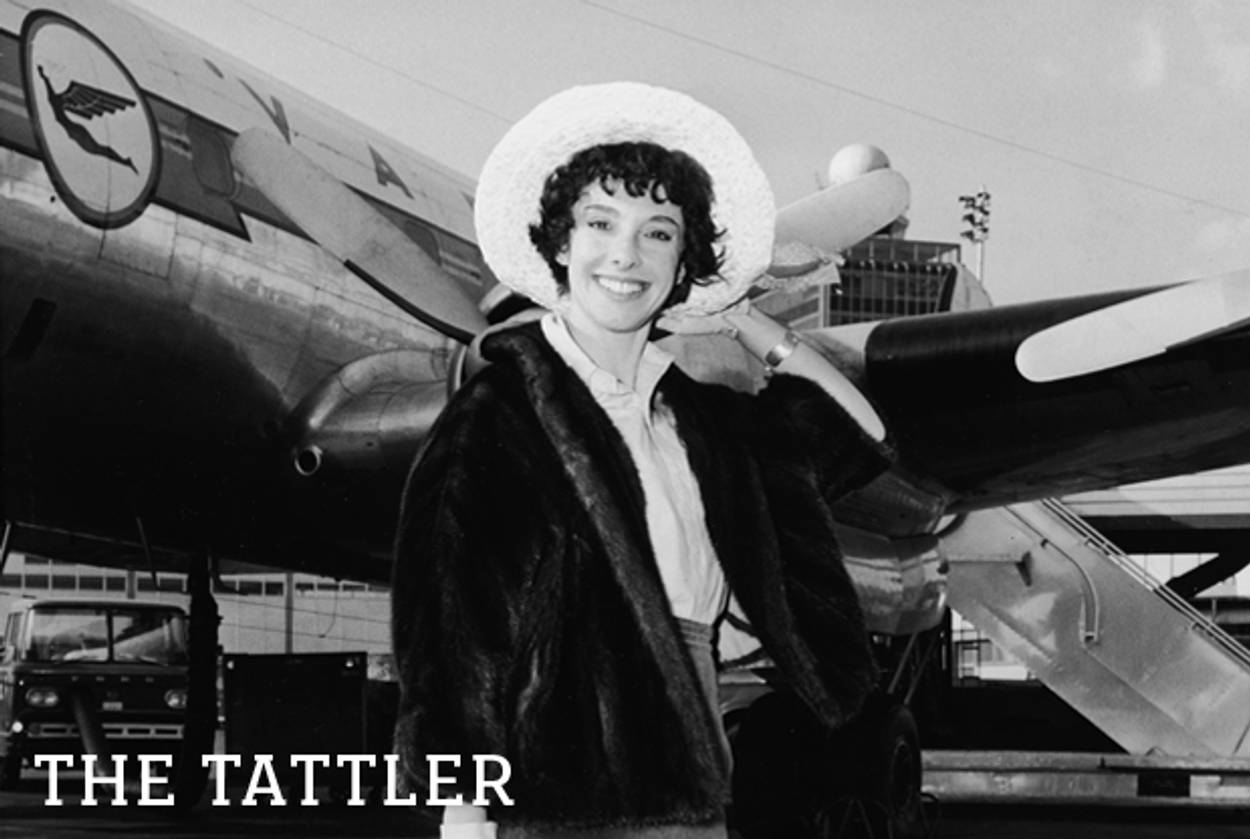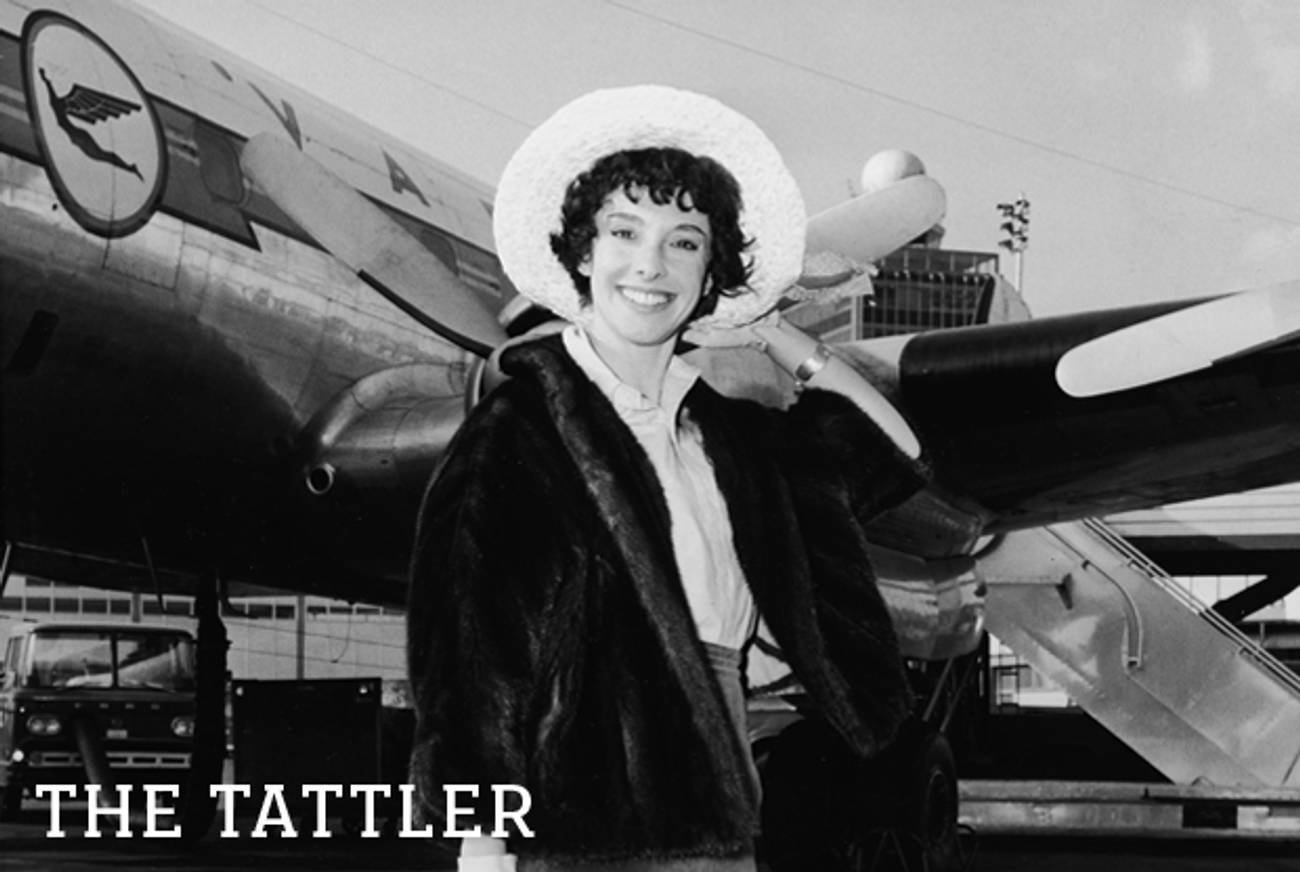Chick Lit’s Jewish Mother
Starting with 1958’s The Best of Everything, Rona Jaffe’s complicated, trashy novels make ideal beach reads




It’s official! Memorial Day is but a distant memory—pardon the pun—and Summer 2012 is finally upon us. If you’re anything like me, for the next three months you’ll be spending a lot of time worrying about how fat your armpits look in a tank top and trying to be a politely unobtrusive guest at other people’s vacation homes.
I can’t offer you any help with the armpit problem without invoking cries of “Healer! Heal thyself!” but there’s no better way to keep out of a testy host’s hair than to lose yourself in a good, “trashy” (which is a word that literary people like myself like to use to mean “genuinely absorbing”) novel. A whole slew of summer reading round-up lists, the seasonal equivalent of those service-y holiday fancy-people features about what to give the doorman for Christmas so he doesn’t let his college-aged niece squat in your apartment while you’re in St. Bart’s, are currently circulating in every major magazine and newspaper right now, giving you the lowdown on all the books the struggling publishing industry is sincerely hoping you buy at full price this June.
But when it comes to beach reading, personally I like to stick with the classics. There’s nothing like those big glossy bricks of earnest camp about small-town girls in the big city, hearkening back to an age when men were sozzled cads, when your purse matched your shoes but you couldn’t name the designer of either (and it wouldn’t mean anything if you could), and modern feminist consciousness was just the flicker of a sail on the horizon to get you through the difficult days until the next episode of Mad Men. So, now is the time of year to turn to the books you scavenged from your grandmother’s shelves after she was shipped off to the Home, books whose yellowing title pages still bear her name scrawled in fading ballpoint pen. This sticky-fingered, peeling-sunburn, cocktail-headache stretch of year is the time for Jacqueline Susann, Judith Krantz, Jackie Collins (an alliterative trio who are all, for those of you who keep track of these things, at least partially something else that starts with a “J”). And of course, my personal favorite, the woman who started it all: Rona Jaffe.
The Best of Everything, Rona Jaffe’s first and most famous book, published in 1958 when the author was just 27, is often referred to as the first instance of the much (and often unfairly) maligned genre of “chick lit.” Like nearly all ur-texts, The Best of Everything, with its vast passages of interior monologues, finely drawn quartet of complicated characters, and matter-of-fact attitude toward matters of both the heart and less noble parts of anatomy (I’ve yet to see a mainstream modern treatment of abortion as even-handed and unflinching as Jaffe’s description—Lena Dunham and HBO included), is a far superior piece of work than the derivative pretenders it spawned and with which it is often unfairly grouped. Gloriously, the book has experienced something of a resurgence of late. The first season of Mad Men prominently displayed a first-edition copy as a scenic prop, and Dunham, the wunderkind creator of Girls, has proclaimed the book—a tale of four 20-something women (perhaps the first instance of the quartet of female “types” that have formed the structure of seminal female entertainment from The Golden Girls to Sex and the City) working with varying degrees of professional commitment at a pulpy Manhattan publishing house—to have been a huge influence on her own thematically similar work.
But while The Best of Everything might be the work on which Jaffe’s reputation rests, my sentimental favorite among her books is her underrated 1979 best-seller Class Reunion (another Grandma-shelf pick). A three-decade saga about a group of four women who meet at Radcliffe in the 1950s and go on to lead very different lives, the novel is most deft and fascinating in its treatment of Emily Appelbaum, the bright, but fretful, young wannabe pediatrician whose eventual trajectory into housewifely agoraphobia and genuine madness is an almost literal dramatization of Betty Friedan’s The Feminine Mystique. That Emily is also the novel’s—and one of Jaffe’s only—explicitly Jewish character is more than a coincidence: It’s the entire point.
In the early section of the book, Emily, the upper-middle-class daughter of a successful Long Island businessman, is treated with indifferent kindness by her wealthy WASP classmates. They invite her to parties, compliment her clothes, and are generally pleasant and friendly. Emily, however, is constantly aware of her difference; self-conscious about her Old World parents, her telltale last name (in the tradition of anxious American Jews everywhere, she replies to questions about its origin with a tense: “German”), and most memorably, the gray muskrat coat her mother insists on buying her instead of the plain camel-colored cloth ones her tall blonde classmates wear with aristocratic indifference to the Boston cold. When she meets Ken, an improbably sandy-haired Jewish Harvard boy studying to be a plastic surgeon from a family just like hers, she (and her parents) are almost faint with relief. As her gentile classmates drift into lives both sexually and socially unconventional—Chris, the career girl, lives in Paris with a complicated self-hating bisexual; Annabel, the slutty one, fends for herself as a single mother; Daphne, the WASP princess, lives a bohemian existence in the nonrestricted part of Greenwich (that is, the Village)—Emily dutifully and willingly marries Ken, moves to Beverly Hills, supports him in his successful practice … and goes so crazy from all that Nice Jewish Wifeliness she nearly drowns their two children in the pool, like a B’nai Brith Medea.
Sure, it’s an extreme example—it’s a beach book, after all. But Emily’s story (and its ultimately empowering ending, which I don’t want to ruin for you) is a chilling reminder of the double bind in which Jewish women of the postwar generation found themselves; not only were women like Emily expected to conform to repressive gender roles because they were women; they were also supposed to do so because they were Jews. They owed it to their people, their parents, their tribe to settle down with Nice Jewish Boys and produce Nice Jewish Children; a kind of deeply manipulative sexism disguised as, and indeed conflated with, historical continuity.
For the Jewish reader, this conflation (from which, I might add, the Jewish community is still not quite immune) is what gives Class Reunion such unexpected poignancy, that dramatizes the rage behind every JAP joke: For Jewish Girls Who Have Considered Infanticide When Bloomingdale’s Is Enuf (and her brother is a doctor).
Anyway, enjoy the sunshine.
***
Like this article? Sign up for our Daily Digest to get Tablet Magazine’s new content in your inbox each morning.
Rachel Shukert, a Tablet Magazine columnist on pop culture, is the author of the memoirs Have You No Shame? and Everything Is Going To Be Great. Starstruck, the first in a series of three novels, is new from Random House. Her Twitter feed is @rachelshukert.
Rachel Shukert is the author of the memoirs Have You No Shame? and Everything Is Going To Be Great,and the novel Starstruck. She is the creator of the Netflix show The Baby-Sitters Club, and a writer on such series as GLOW and Supergirl. Her Twitter feed is @rachelshukert.